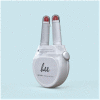Phototherapy as a Treatment for Dermatological Diseases, Cancer, Aesthetic Dermatologic Conditions and Allergenic Rhinitis in Adult and Paediatric Medicine
- PMID: 36676145
- PMCID: PMC9864074
- DOI: 10.3390/life13010196
Phototherapy as a Treatment for Dermatological Diseases, Cancer, Aesthetic Dermatologic Conditions and Allergenic Rhinitis in Adult and Paediatric Medicine
Abstract
The development of light-emitting diodes (LEDs) has led to an increase in the use of lighting regimes within medicine particularly as a treatment for dermatological conditions. New devices have demonstrated significant results for the treatment of medical conditions, including mild-to-moderate acne vulgaris, wound healing, psoriasis, squamous cell carcinoma in situ (Bowen's disease), basal cell carcinoma, actinic keratosis, and cosmetic applications. The three wavelengths of light that have demonstrated several therapeutic applications are blue (415 nm), red (633 nm), and near-infrared (830 nm). This review shows their potential for treating dermatological conditions. Phototherapy has also been shown to be an effective treatment for allergenic rhinitis in children and adults. In a double-anonymized randomized study it was found that there was 70% improvement of clinical symptoms of allergic rhinitis after intranasal illumination by low-energy narrow-band phototherapy at a wavelength of 660 nm three times a day for 14 consecutive days. Improvement of oedema in many patients with an age range of 7-17 were also observed. These light treatments can now be self-administered by sufferers using devices such as the Allergy Reliever phototherapy device. The device emits visible light (mUV/VIS) and infra-red light (660 nm and 940 nm) wavelengths directly on to the skin in the nasal cavity for a 3 min period. Several phototherapy devices emitting a range of wavelengths have recently become available for use and which give good outcomes for some dermatological conditions.
Keywords: allergy; blue light; phototherapy; rhinitis; skin conditions.
Conflict of interest statement
The authors declare no conflict of interest.
Figures
Similar articles
-
Phototherapy with Light Emitting Diodes: Treating a Broad Range of Medical and Aesthetic Conditions in Dermatology.J Clin Aesthet Dermatol. 2018 Feb;11(2):21-27. Epub 2018 Feb 1. J Clin Aesthet Dermatol. 2018. PMID: 29552272 Free PMC article. Review.
-
Study on the effect of phototherapy for inhibition of symptoms associated with allergic rhinitis.Eur Ann Allergy Clin Immunol. 2020 Mar;52(2):66-73. doi: 10.23822/EurAnnACI.1764-1489.111. Epub 2019 Oct 8. Eur Ann Allergy Clin Immunol. 2020. PMID: 31594294
-
Narrow-band red light phototherapy in perennial allergic rhinitis and nasal polyposis.Ann Allergy Asthma Immunol. 1997 Apr;78(4):399-406. doi: 10.1016/S1081-1206(10)63202-4. Ann Allergy Asthma Immunol. 1997. PMID: 9109708 Clinical Trial.
-
Rhinophototherapy: gimmick or an emerging treatment option for allergic rhinitis?Rhinology. 2011 Dec;49(5):499-506. doi: 10.4193/Rhino11.118. Rhinology. 2011. PMID: 22125778 Review.
-
Effects of Combined Visible and Infrared Light Rhinophototherapy in Patients With Allergic Rhinitis.Am J Rhinol Allergy. 2023 Jan;37(1):65-73. doi: 10.1177/19458924221133898. Epub 2022 Oct 20. Am J Rhinol Allergy. 2023. PMID: 36266929
Cited by
-
Effect of Psychological Intervention on Quality of Life Among Patients with Psoriasis: A Meta-analysis.Int J Behav Med. 2024 Dec;31(6):911-922. doi: 10.1007/s12529-024-10315-0. Epub 2024 Sep 6. Int J Behav Med. 2024. PMID: 39242480
-
Endo-radiofrequency subcision in the treatment of acne scars: a pilot investigative study.Lasers Med Sci. 2023 Jul 4;38(1):154. doi: 10.1007/s10103-023-03819-w. Lasers Med Sci. 2023. PMID: 37400740 Clinical Trial.
References
-
- Whelan H.T., Buchmann E.V., Dhokalia A., Kane M.P., Whelan N.T., Wong-Riley M.T., Eells J.T., Gould L.J., Hammamieh R., Das R., et al. Effect of NASA Light-Emitting Diode Irradiation on Molecular Changes for Wound Healing in Diabetic Mice. J. Clin. Laser Med. Surg. 2003;21:67–74. doi: 10.1089/104454703765035484. - DOI - PubMed
Publication types
LinkOut - more resources
Full Text Sources


